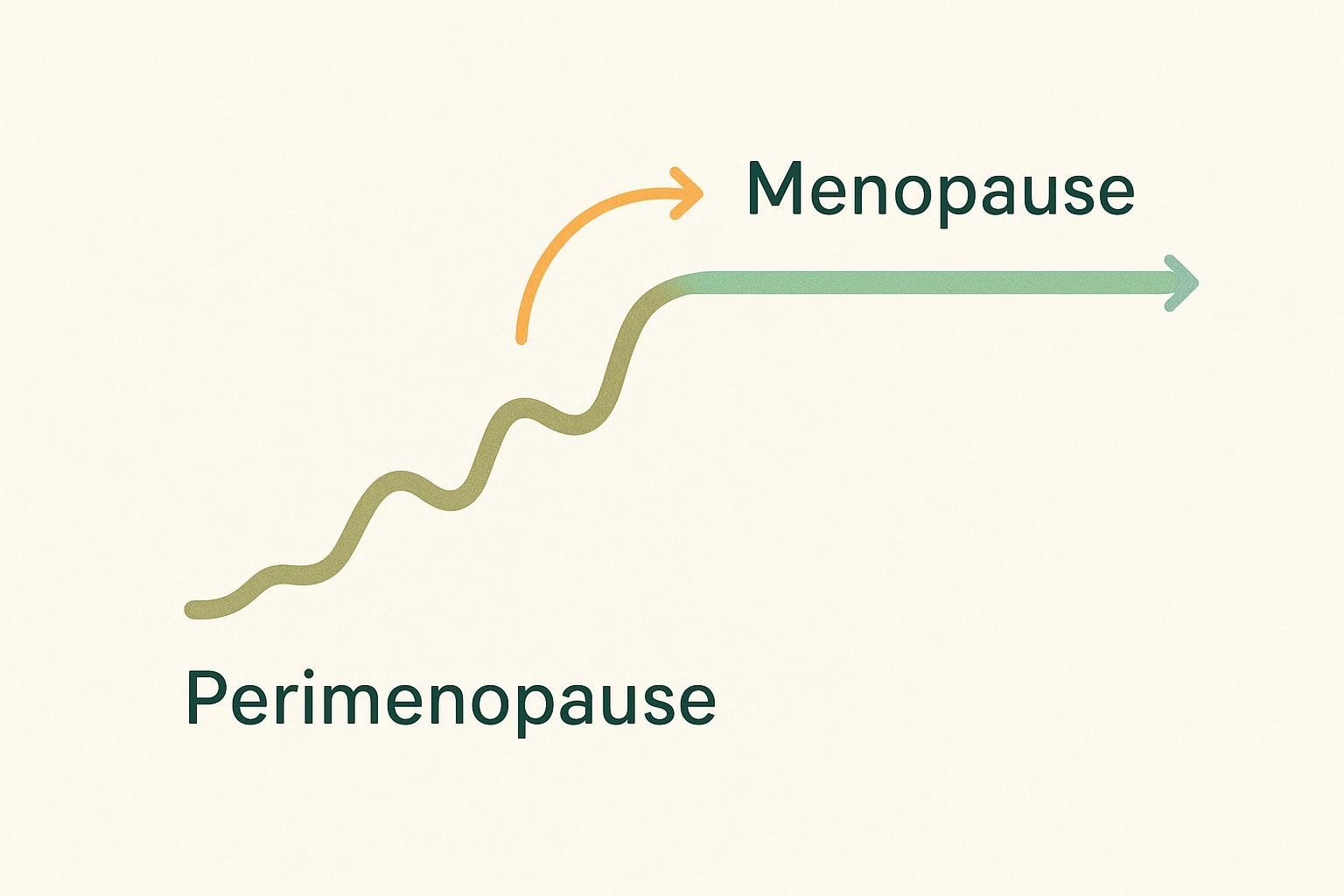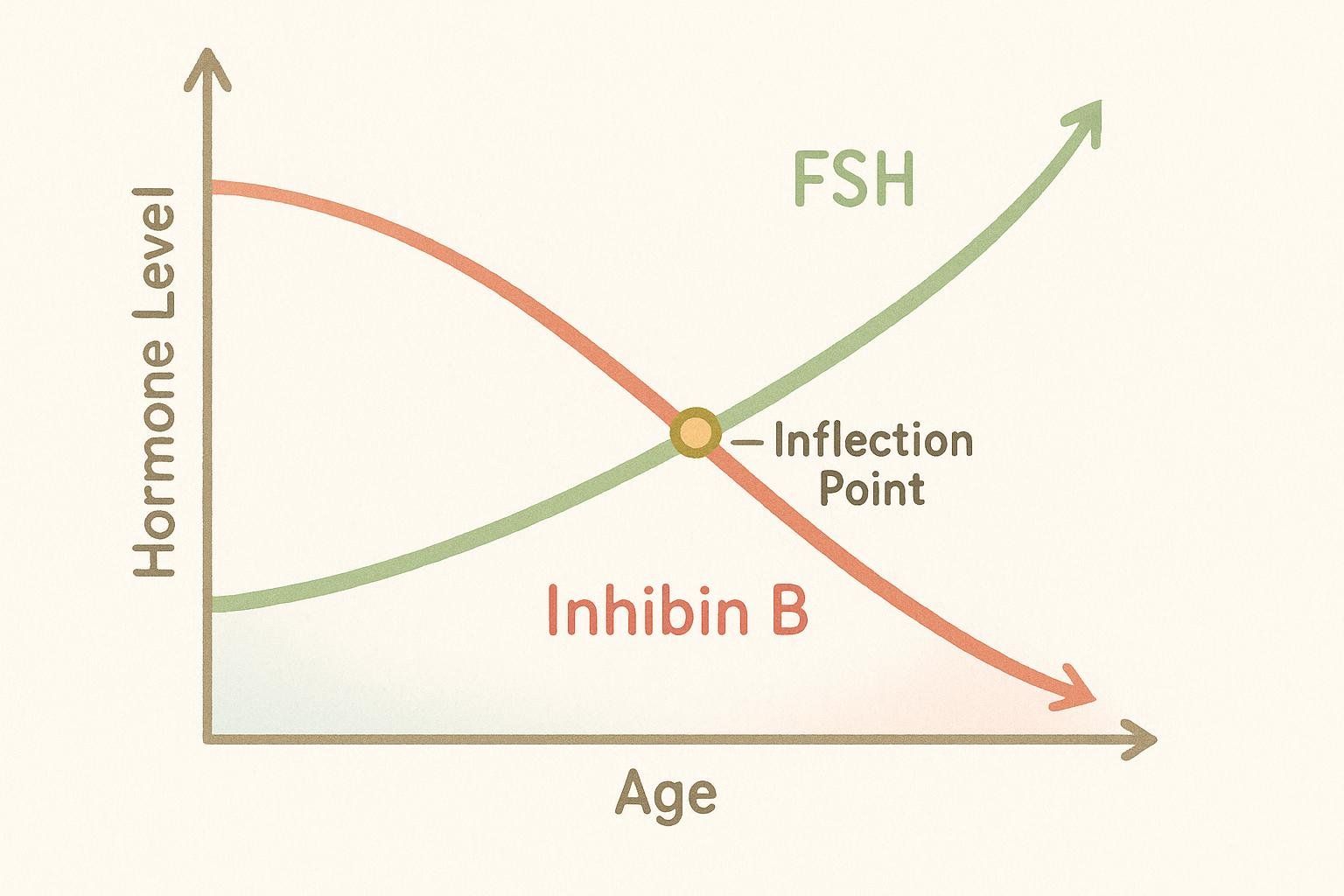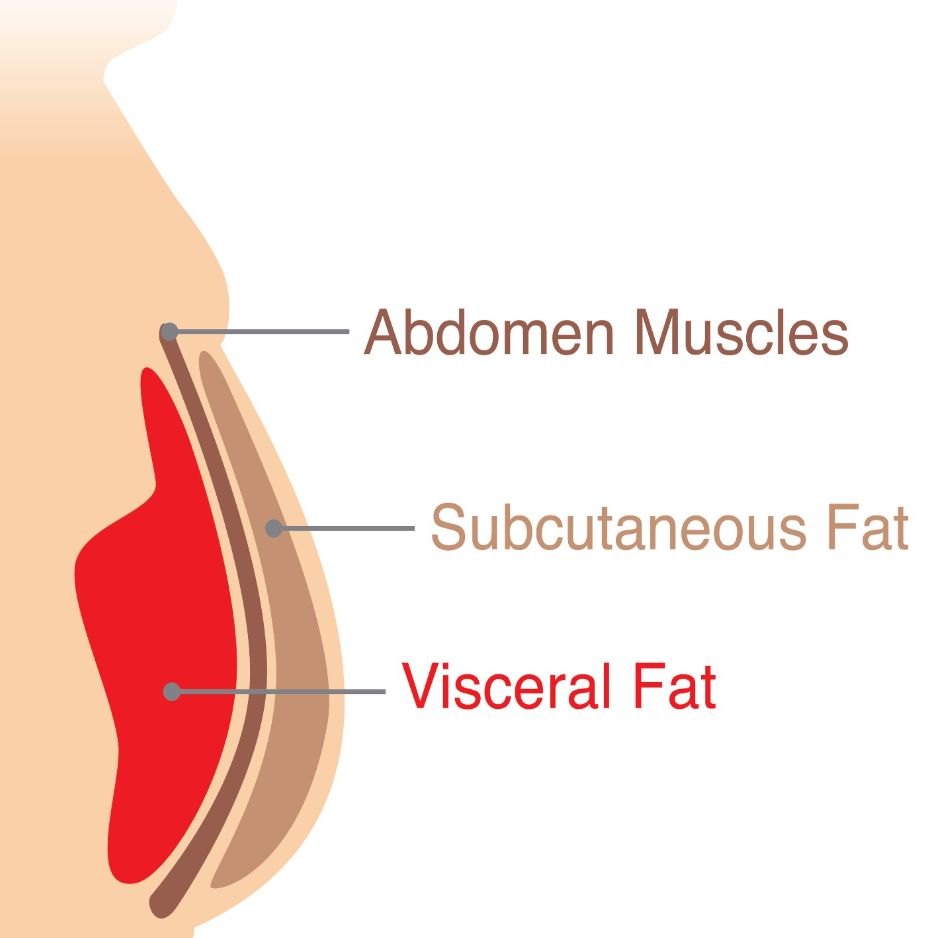Perimenopause Age: Signs, Timelines & What to Expect

Perimenopause Age: Signs, Timelines & What to Expect
Quick-Answer Box: At What Age Does Perimenopause Start?
Most people begin perimenopause around age 47 (median), but the normal range spans the mid-30s to the early-50s (Gold et al., 2011; Cleveland Clinic).
Table of Contents
- Perimenopause vs. Menopause: A 60-Second Refresher
- Average Age & Statistical Range
- What Shortens or Extends the Timeline?
- Early Perimenopause (Under 40): Causes & Fertility Considerations
- Late-Onset Perimenopause (Over 50): What It Means
- How Long Does Perimenopause Last?
- Symptom Timeline & Self-Check Quiz
- When to See a Clinician
- Lifestyle Strategies to Smooth the Transition
- FAQs
Perimenopause vs. Menopause: A 60-Second Refresher

Perimenopause is the hormonal on-ramp leading to menopause, marked by fluctuating estrogen and progesterone. It ends once you’ve gone 12 consecutive months without a period—the clinical definition of menopause (Cleveland Clinic).
Why it matters: Hormone swings during perimenopause—not menopause itself—often cause the most disruptive symptoms (hot flashes, sleep disruption, mood swings) and kick-start body-composition shifts, which can be tracked with a DEXA scan for body composition testing.
Average Age & Statistical Range
| Metric | Age (Years) | Source |
|---|---|---|
| Median onset | 47 | Gold et al., 2011 |
| Typical range | Mid-30s – Early 50s | Cleveland Clinic |
| Early onset | < 40 | Cleveland Clinic |
| Mean age of menopause | 51 – 52 | Mayo Clinic; SWAN |
Why 47? A Hormonal Inflection Point

Cross-sectional hormone studies show FSH rises and inhibin B drops roughly five years before the final menstrual period, clustering around age 47 (Gold et al., 2011).
What Shortens or Extends the Timeline?
| Factor | Impact on Onset Age | Source |
|---|---|---|
| Smoking | Advances menopause by 1–2 years; perimenopause begins earlier | Tawfik et al., 2015 |
| Family history | Mother’s early menopause doubles your odds of early onset | Framingham Offspring Study |
| Ovarian or uterine surgery | Oophorectomy or hysterectomy can accelerate the transition | ACOG FAQ |
| Cancer treatments | Chemo & pelvic radiation may deplete follicles and trigger earlier menopause | NIH Women’s Health |
| Autoimmune or genetic disorders | Turner syndrome & fragile X premutation linked with premature ovarian insufficiency | Fukami et al., 2023 |
| BMI & metabolic factors | Very low BMI may bring onset forward; obesity can delay it slightly—data mixed | SWAN sub-study |

Early Perimenopause (Under 40): Causes & Fertility Considerations
Experiencing hot flashes and skipped periods at 35? It’s uncommon but possible. Premature menopause—defined as menopause before age 40—affects about 1 % of people (Cleveland Clinic). Early perimenopausal symptoms can precede this diagnosis.
Potential Triggers
- Genetic variants (e.g., FMR1 premutation)
- Autoimmune thyroid or adrenal disease
- Smoking intensity & duration
- Prior chemotherapy
- Chronic under-nutrition or low BMI
Fertility Outlook
Egg quantity and quality decline faster when hormonal changes start early. If future pregnancy is a goal, ask about AMH testing and egg freezing sooner rather than later.
Pro tip: Use a DEXA baseline scan to monitor bone density if low estrogen persists.
Late-Onset Perimenopause (Over 50): What It Means
Entering perimenopause in your 50s is less common but usually benign. Higher lifetime estrogen exposure may confer heart and bone benefits, but consult your clinician to rule out endometrial hyperplasia if bleeding becomes heavy or prolonged.
How Long Does Perimenopause Last?
Longitudinal data from the SWAN study show the menopausal transition typically lasts 4–8 years, but it can be as brief as 2 years or extend beyond 8 years. Earlier onset often predicts a longer transition.
Symptom Timeline & Self-Check Quiz
Common Symptoms—and When They Tend to Show Up

| Age Band | Hormone Trend | Frequent Symptoms | BodySpec Insight |
|---|---|---|---|
| 40–44 | Early FSH rise | Longer/shorter cycles, PMS “on steroids” | Capture baseline body-fat & bone density before changes snowball |
| 45–49 | Estrogen spikes & dips | Hot flashes, night sweats, brain fog, mid-section fat gain | See Menopause Weight Gain Guide for belly-fat tactics |
| 50–52 | Estrogen decline stabilizes | Vaginal dryness, sleep issues, loss of lean mass | Interpreting DEXA scan results helps track muscle & visceral fat |
5-Question Self-Check Quiz
Answer Yes/No to each question:
- Has your cycle length changed by 7 or more days more than once in the past year?
- Have you had 60 or more days between periods in the past 12 months?
- Do you experience sudden heat surges (hot flashes) or night sweats?
- Has your sleep or mood noticeably worsened without another clear cause?
- Are you gaining fat around the abdomen despite similar diet/activity?

If you answered “Yes” to several questions, it may be a good time to discuss these symptoms with your healthcare provider.
When to See a Clinician
Seek medical advice if you experience:
- Bleeding that’s extremely heavy or lasts > 10 days
- 60 or more days without a period before age 45
- Night sweats that drench clothing
- Severe mood swings or depression
- Onset of perimenopause-like symptoms before age 35
A provider may order FSH, estradiol, TSH, and AMH labs or pelvic imaging to rule out other causes.
Lifestyle Strategies to Smooth the Transition

- Strength-train 2–3 ×/week to offset the ~ 1 % annual lean-mass decline. Follow our Body-Recomposition 101 guide.
- Prioritize Protein & Fiber. Women 40 + who eat ≥ 1.2 g protein/kg retain more muscle in randomized controlled trials (2024 Nutrients review).
- Balance Blood Sugar with 10-minute post-meal walks—shown to cut glucose spikes 17 % (a 2023 Sports Medicine study).
- Adopt Sleep Hygiene: cool room (< 68 °F), consistent bed-wake times, and CBT-I if insomnia persists.
- Manage Stress: mindfulness, paced breathing, or nature walks; cortisol drops ~ 16 % after 20 minutes outdoors (Frontiers in Psychology 2019).
- Discuss HRT within 10 years of menopause for symptom relief and bone health—see our guide on whether HRT causes weight gain.

FAQs
Is 45 too early for perimenopause?
No. Age 45 sits within the common range. Track symptoms and consider a hormone panel if periods stop for > 3 months.
Can DEXA detect hormonal changes?
DEXA doesn’t measure hormones, but it reveals downstream effects—visceral fat gains and bone-density dips—before the scale moves.
Does birth control hide perimenopause?
Combined oral contraceptives can mask cycle changes, but symptoms like hot flashes or insomnia may still surface.
Are hot flashes the first sign?
Often, cycle irregularity precedes hot flashes by months or years.
What about trans men & nonbinary individuals?

Those with ovaries experience similar timelines unless testosterone therapy or oophorectomy alters the course; inclusive care is key.
Your Next Step: Data-Driven Tracking
Understanding your body's signals is the first step toward proactive health management. Here’s how you can translate these insights into action:
- Review your answers to the self-check quiz above.
- Book a BodySpec DEXA scan to quantify lean mass, visceral fat, and bone density.
- Re-scan every 6–12 months to measure the impact of training, nutrition, or medical therapy on your body’s response to shifting hormones.
Perimenopause may feel unpredictable, but the right metrics and strategies turn it into a phase you can measure, manage, and master.


